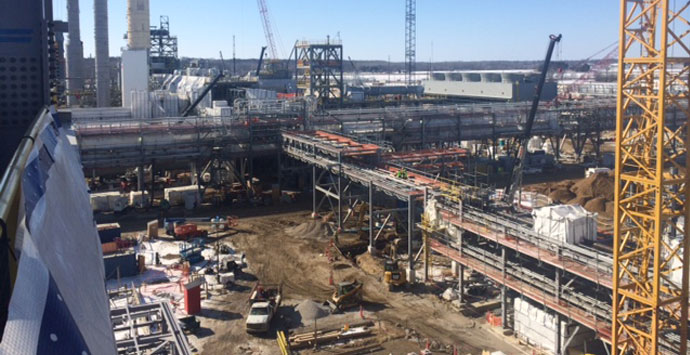#SafetyforLife: Discovering a career in occupational safety
I began college as an accounting major until I realized that career path was not for me. A friend encouraged me to take an occupational safety course. After a few courses, I realized that occupational safety provided an opportunity to make a difference in the lives of the individuals that I work with and those that come in contact with on our projects. As a high school and college student, during summers and breaks, I often worked for a small contractor in the Detroit area. Though I never witnessed a serious injury, in my occupational safety course studies, it became evident that we were taking shortcuts and undue risks that put employees in harm’s way. At that point, I knew occupational safety was the career route for me.
I began my safety, health and environmental (SH&E) career with an AECOM legacy company more than 17 years ago. During my career, I have had the opportunity to support clients across multiple industries — such as automotive, power, chemical, manufacturing, oil and gas, and nuclear waste remediation — in varying roles of SH&E responsibility. My first opportunity to work in a lead role was with an automotive client on a body shop addition in New Jersey. This project occurred early in my career and demonstrated what a team focused on employee safety and health could accomplish. Our construction leadership team took hands-on ownership of the safety program, and we were able to complete the project with only one minor first-aid case and zero recordable injures.
 Rigging image on project site.
Rigging image on project site.
In my current role at AECOM as industrial process business unit SH&E director, it is my responsibility to assist leaders with establishing a safety culture focused on the behaviors and leading indicators that we believe will lead to outstanding lagging indicator performance. As background, leading indicators are focused on future safety performance and continuous improvement, while lagging indicators measure past accident statistics to indicate progress toward compliance with safety rules. Within my role, I support multiple projects and programs for the oil, gas and chemical; industrial manufacturing; and facilities management markets. However, my dedication to safety expands beyond the workplace.
As an active member of the American Society of Safety Engineers (ASSE) at the federal and local levels, I work on the ASSE’s Government Affairs Committee (GAC) to positively influence government decisions that impact the SH&E profession. I also help the committee, as well as the overall organization, ensure that any decisions by federal or state government impacting the safety, health and environment of the workplace is based on reliable science and sound technology. As a member of the GAC, I review proposed regulations that effect the SH&E profession to assist ASSE in crafting a position. I also routinely meet with Senate and Congressional staffers, the Occupational Safety and Health Administration, the National Institute for Occupational Safety and Health, and the Chemical Safety Board to help advance ASSE as well as the SH&E profession.
From a thought leadership perspective, I participate on the Construction Users Roundtable (CURT) Safety Committee. CURT is an owner organization jointly working with select contractors to improve safety performance on construction projects and drive incidents, injuries and fatalities to zero. This committee is an industry leader in SH&E knowledge sharing. Currently, I am working on the Leading Indicator White Paper Subcommittee, helping companies develop a safety culture based on leading metrics that drive the behaviors that are needed to establish exceptional safety performance.

Mentoring the next group of leaders in the SH&E profession is of primary importance to me. As a member of Oakland University’s Occupational Safety and Health Program Advisory Board — consisting of safety and health professionals who help steer the program to meet industry needs — I work to provide students with direction, mentoring and advice on the SH&E profession.
Overall, I believe that the success of AECOM and all similar companies begins with the elimination of personal injuries, occupational illnesses, damage to equipment and property, the prevention of pollution and the protection our most vital resource — our employees.
 Jeffrey Dennis is the SH&E director of the industrial process business unit in AECOM’s energy, infrastructure and industrial construction group. He has more than 18 years of experience with safety and health, supporting various clients and projects in the industrial/commercial industries.
Jeffrey Dennis is the SH&E director of the industrial process business unit in AECOM’s energy, infrastructure and industrial construction group. He has more than 18 years of experience with safety and health, supporting various clients and projects in the industrial/commercial industries.
LinkedIn: Jeffrey Dennis






